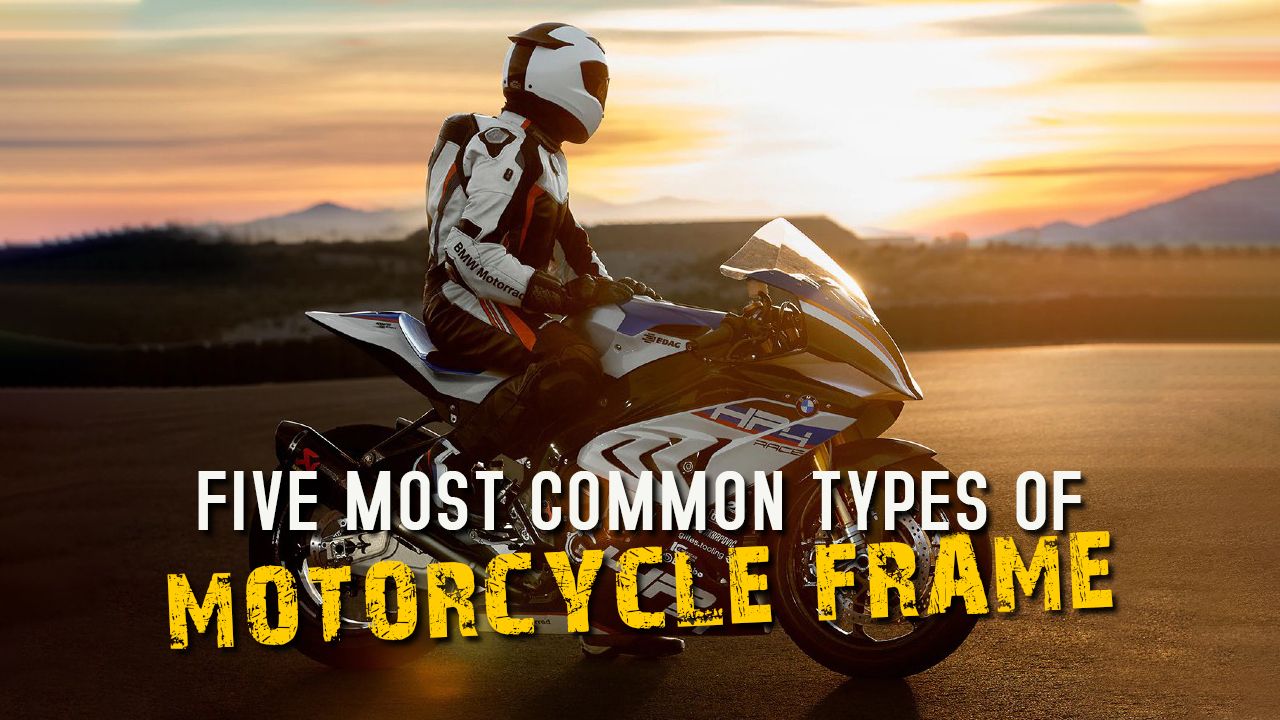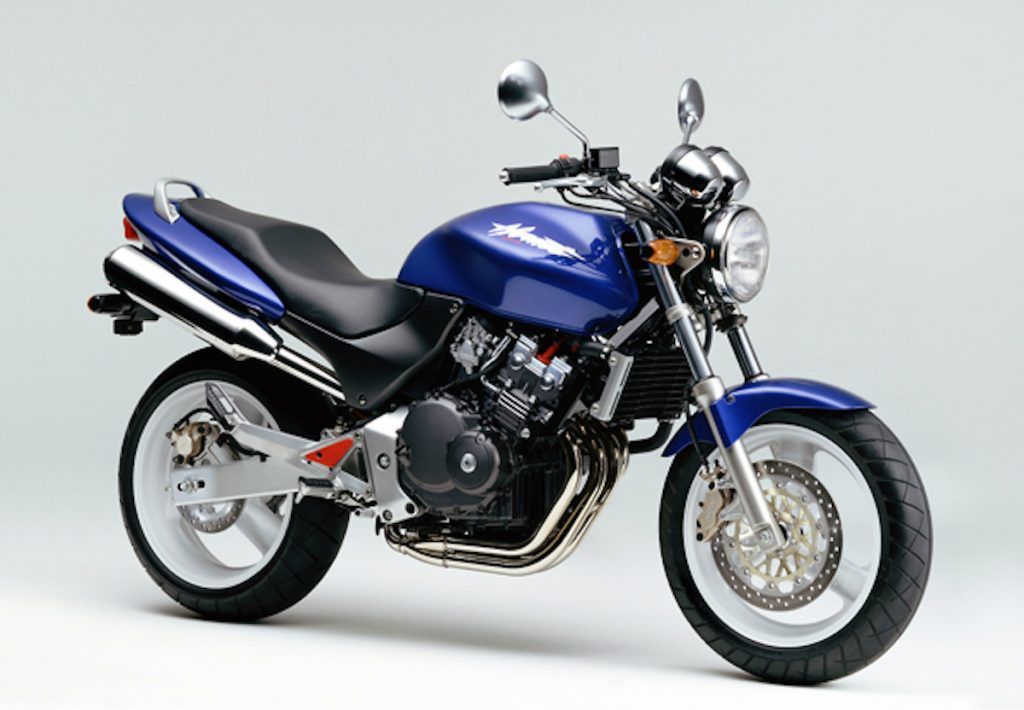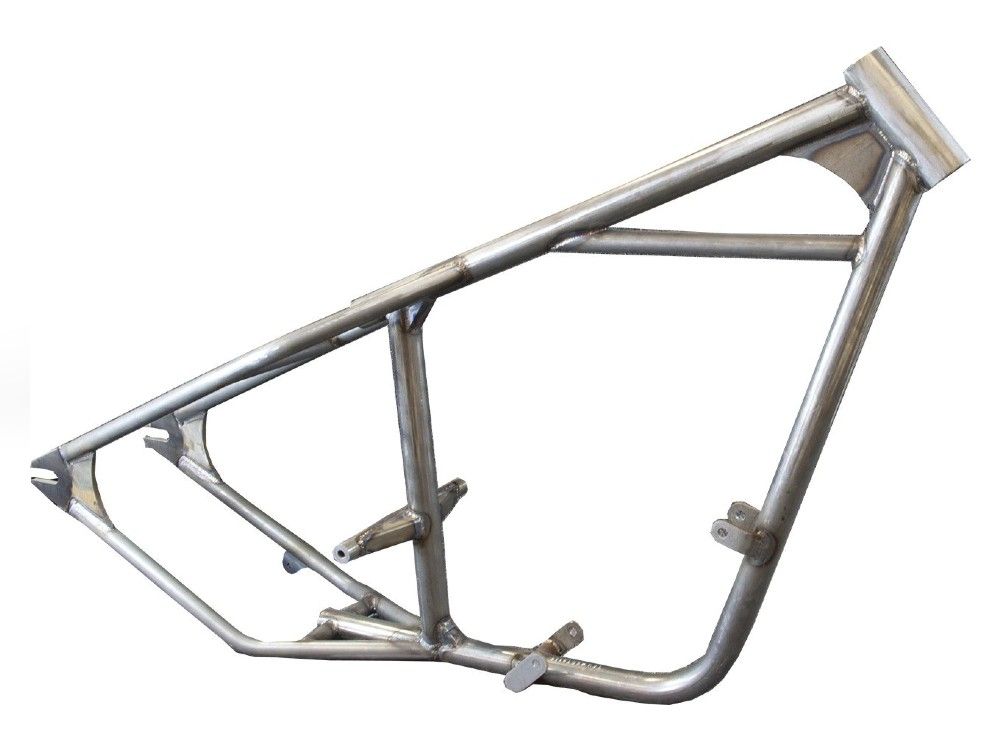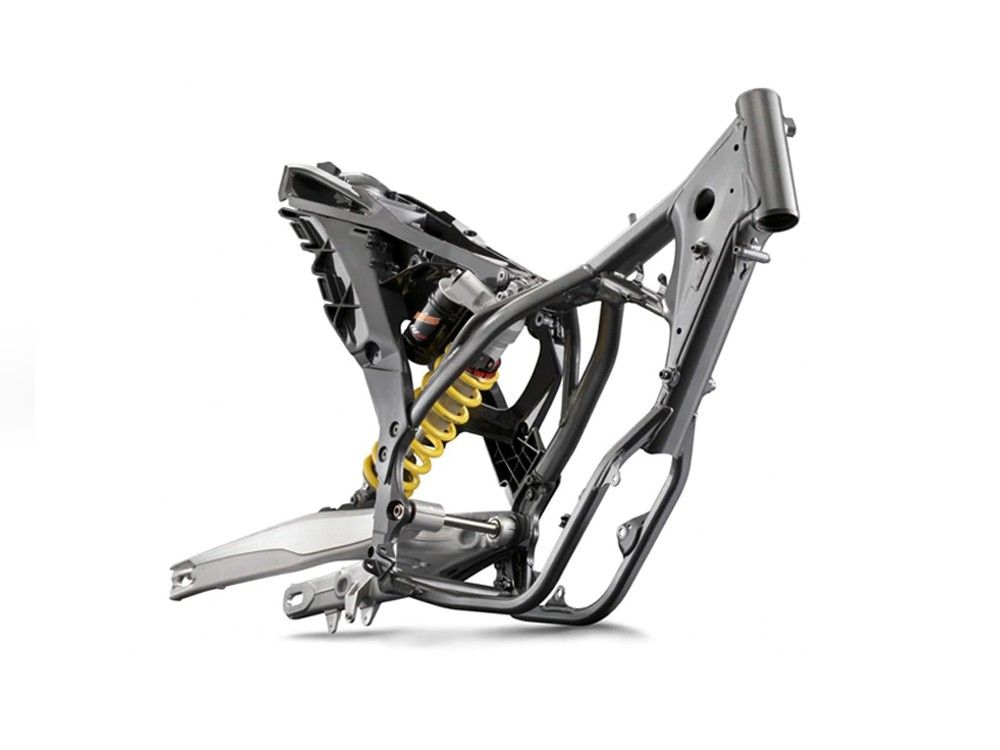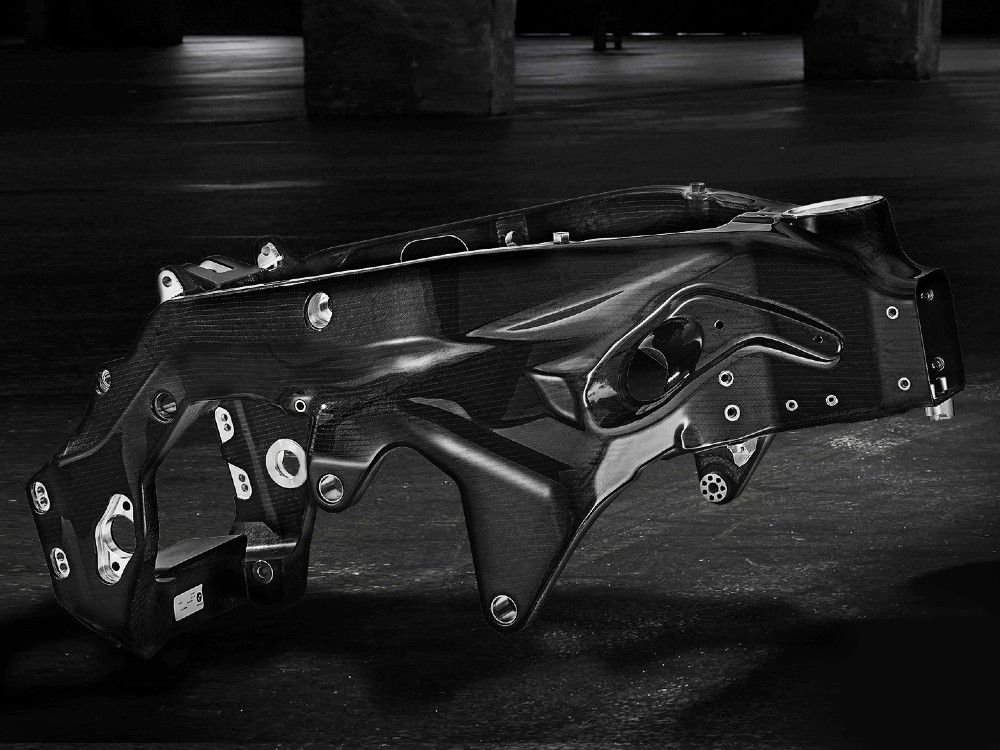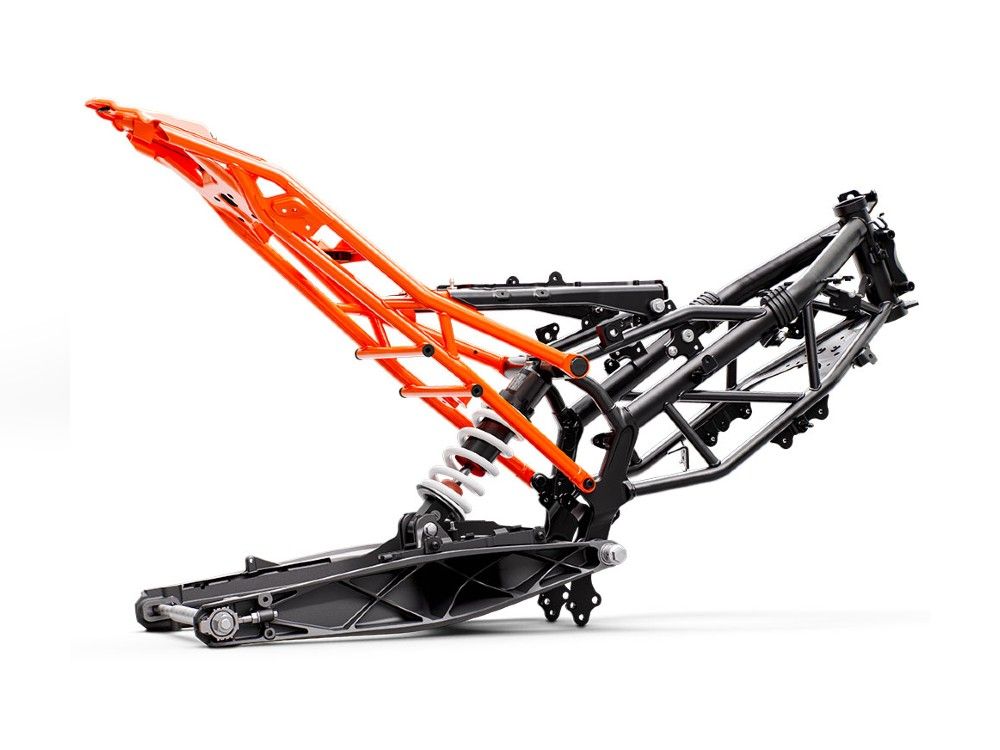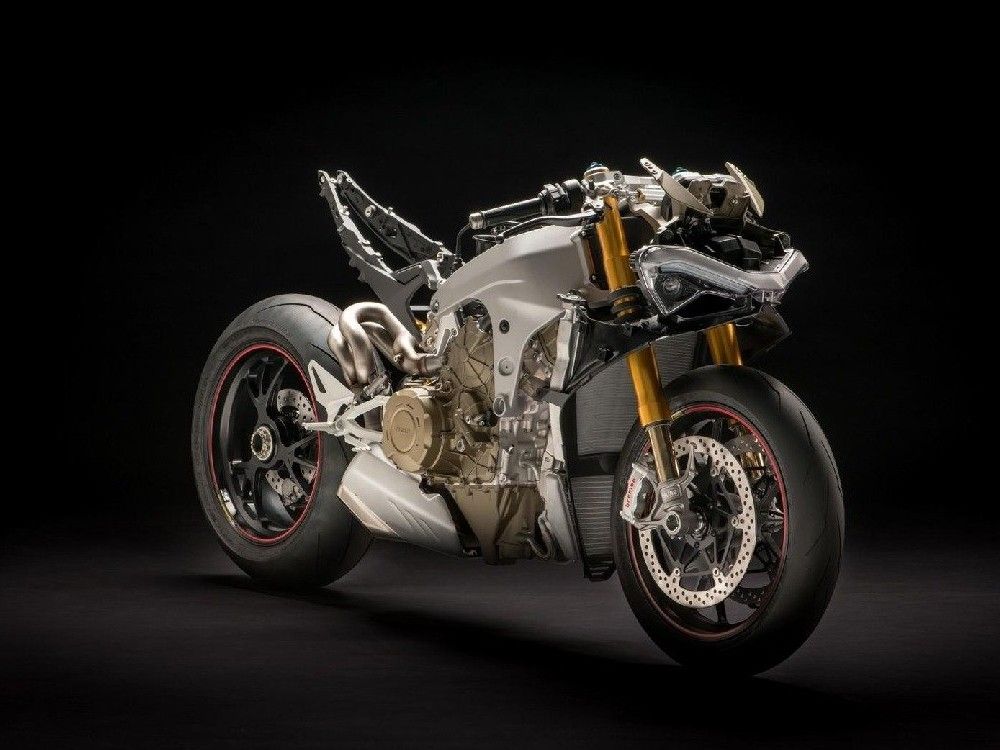When talking motorcycles, the most commonly noted aspects that are touched upon are stuff like horsepower, torque, 0-60mph times, and cubic capacity, and we’re guilty of it too. What goes overlooked, though, is perhaps one of the most key components that holds the entire motorcycle together - the chassis, also known as the frame.
Contrary to what you may think (and we thought at some point too), the frame isn’t just a metal piece built to hold everything together but it plays a pivotal role in defining the bike’s characteristics, which is why over the years, manufacturers have ventured into the depths of physics and chemistry to create different kinds of frames.
Want a lowdown on them? Lucky for you, here's a guide on the five most common types of motorcycle chassis.
Backbone Frame
This type is as simple as motorcycle frames come. Used heavily in smaller and older motorcycles, the backbone frame essentially acts as the spine of the motorcycle. Instead of holding the engine in it, the engine hangs off the chassis, acting as a stressed member to help improve the riding dynamics.
With fairly simple construction, this is one of the most cost-effective frames and offers less torsional rigidity and strength. Hence, these frames aren’t that common in modern motorcycles, with the only exceptions being the small, cheap, commuter bikes.
Cradle Frame
Upping the complexity a tad bit, we come to cradle frames which…well, cradle's the engine. These frames hold the engine “inside” them with steel (usually) tubes going under and over it and are also commonly referred to as downtube frames as well as diamond frames.
There are two configurations of a cradle frame. First, a single cradle frame which has one tube going over the engine and the other going under it. Second, a double-cradle frame with two tubes going under the engine and one going over it.
As you’d expect, the latter provides better support, strength, and rigidity making it more capable of supporting more powerful motorcycles. This is also why single cradle frames are usually seen on small, non-performance-oriented motorcycles like the Royal Enfield Bullet 350.
Twin Spar Frame
A twin-spar frame is one of the most common frames and you’ll find them on most conventional sportbikes. Two spars (beams of metal) curve around the perimeter of the engine rather than over and under the engine, and this is why these frames are also commonly dubbed “perimeter” frames.
As these are wider than cradle frames, twin spar frames offer far better performance under heavy loads, making them more suitable for sportbikes. To up the ante further, manufacturers use all kinds of exotic materials to make twin spar frames even more capable.
A prime example is the BMW HP4 Race, which uses a twin-spar frame made entirely from carbon fiber!}
Trellis Frame
Following the same concept as the perimeter frame is the trellis frame. Here, however, steel tubes are welded together in a triangulated form to create the structure instead of wide beams.
Thanks to the use of hollow tubes and the world’s strongest shape (triangle), trellis frames are lighter and stronger than twin spar frames in most cases. To give you an example of its capabilities, KTM had a steel trellis frame on its MotoGP bike until recently and Ducati has also featured trellis frames on some popular bikes like the Monster, 998, and 1098 in the past.
Monocoque Frame
So why doesn’t Ducati use trellis frames anymore? Well, because it found something even better - monocoque frames.
These frames have been derived from the car world and in a true sense mean having a single piece frame hold every component of the vehicle inside it.
In the bike world, the rules are slightly different with a monocoque chassis, meaning the entire skeleton structure is made of a single piece of metal with airboxes, throttle bodies, and other components running through them.
Why do we see very limited use of such frames in the bike world, though, is because the manufacturing process is capital intensive and requires top-notch robotization, not something you’d want for a mass-market product.
Ducati is currently the flag-bearer of monocoque frames with the Panigale moniker featuring one since its inception and even the 2021 Monster adopting the same. }
Do you know any other commonly used type of motorcycle chassis we missed out on? Do comment below and school us.

